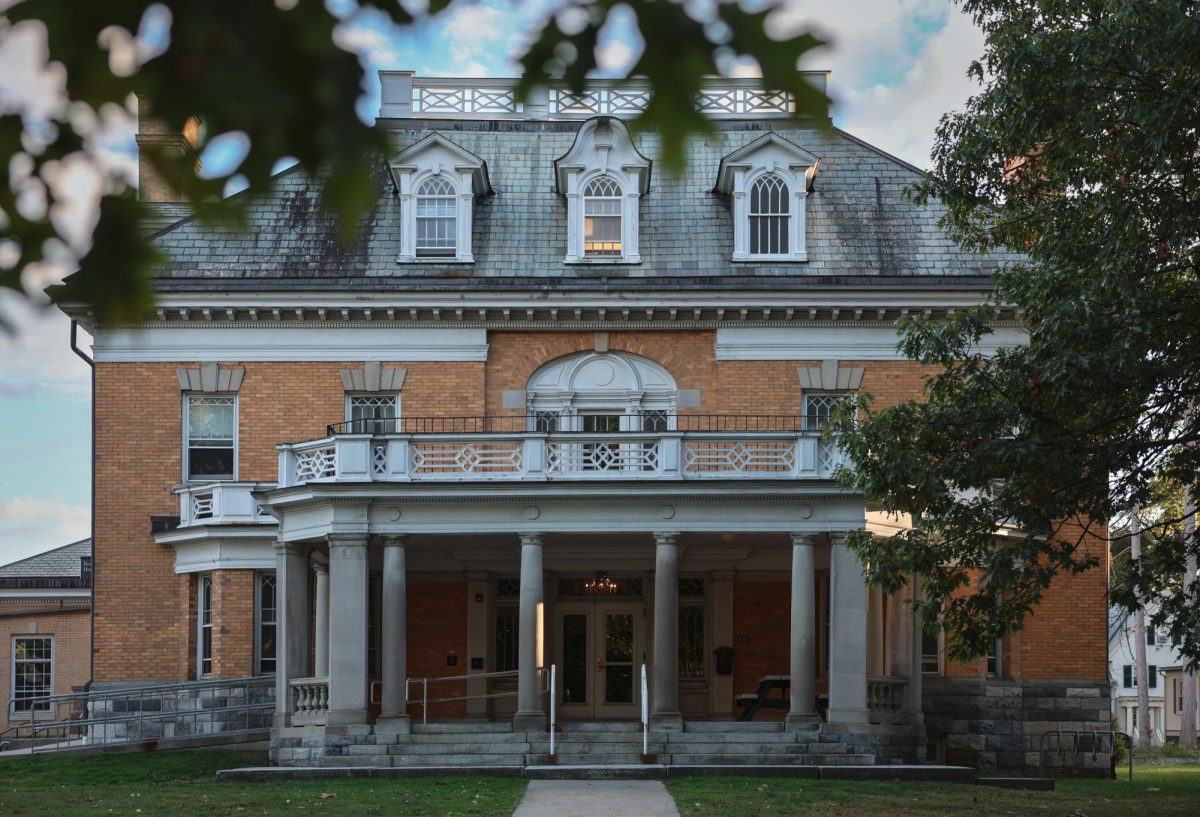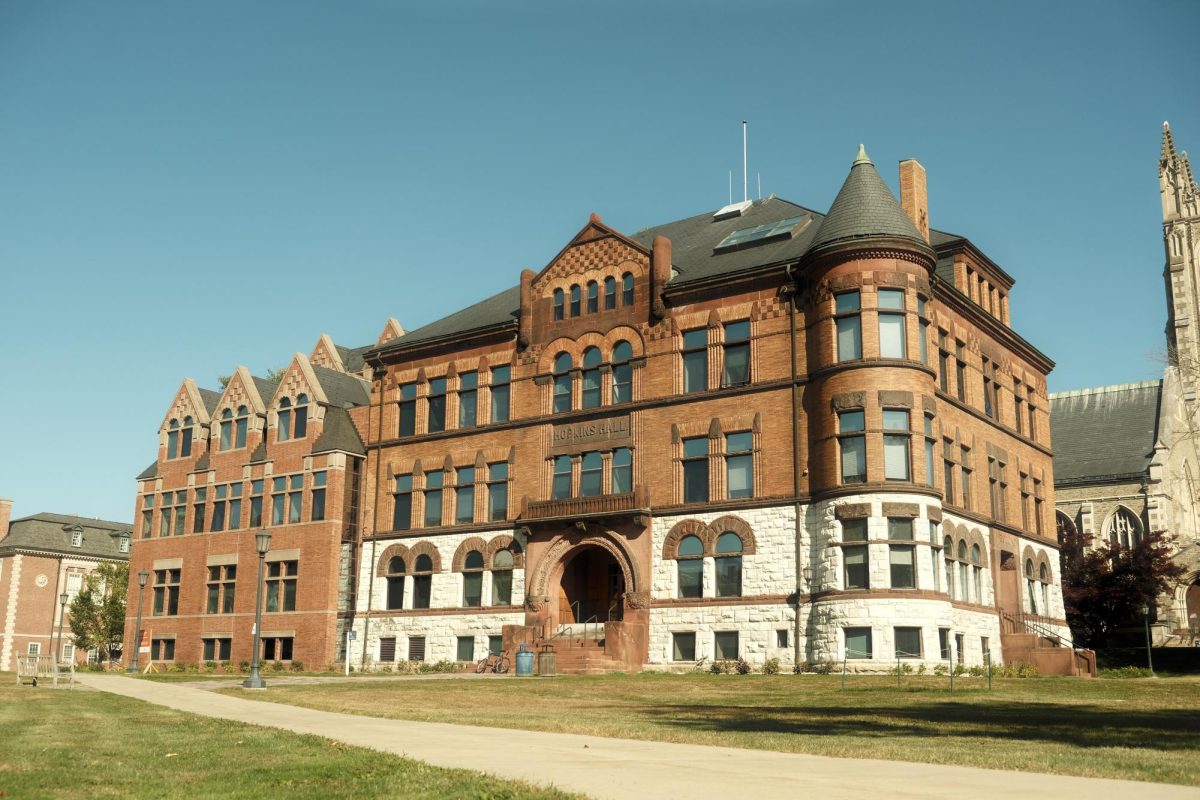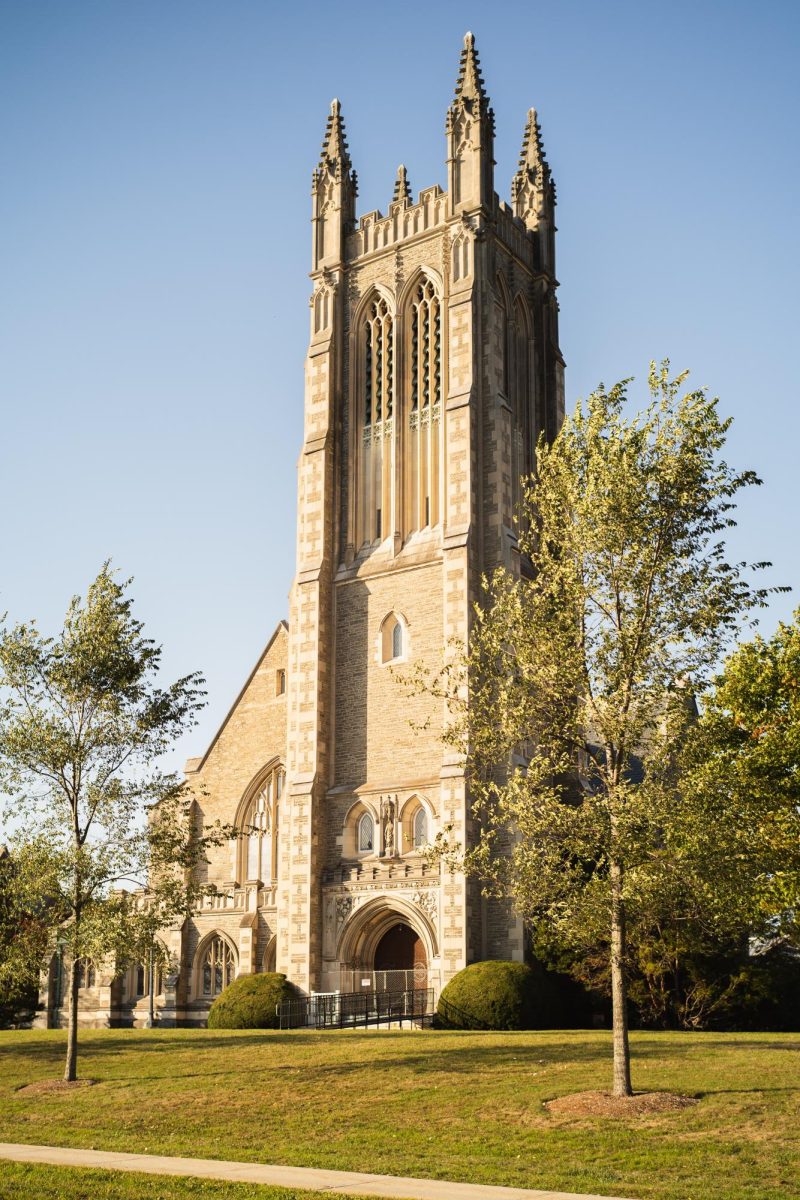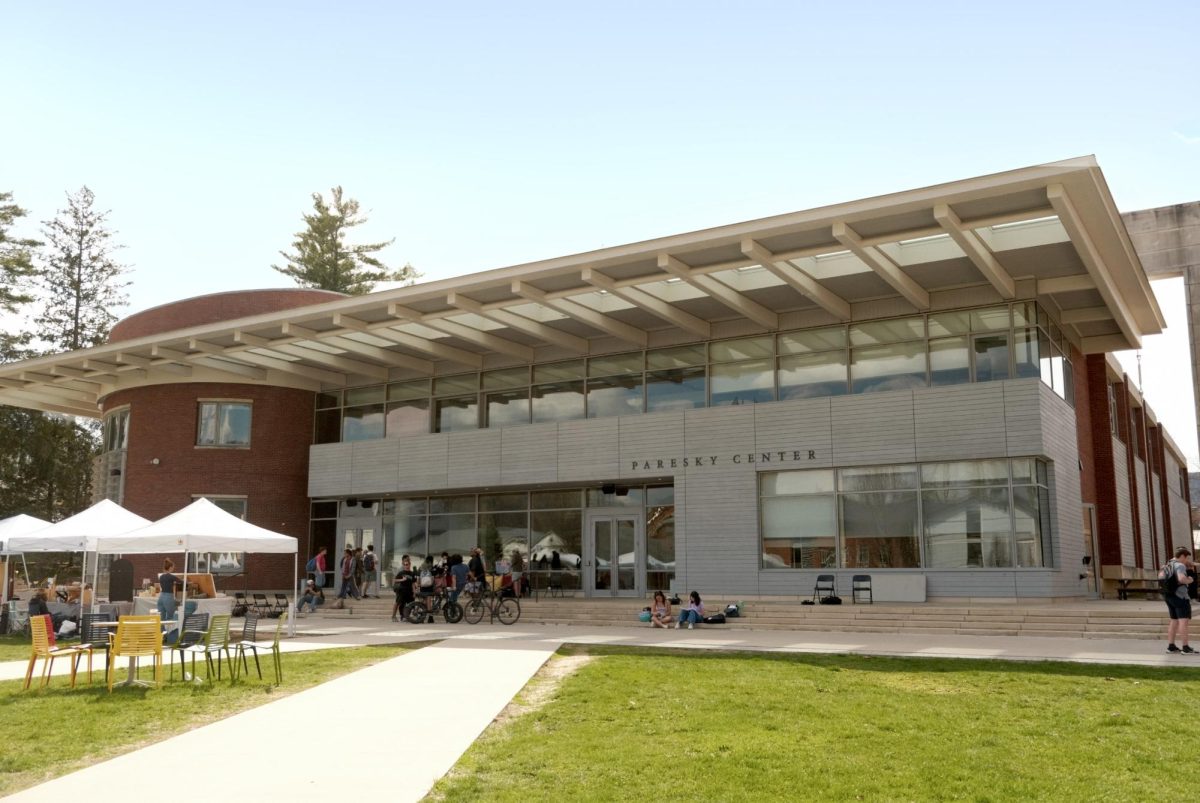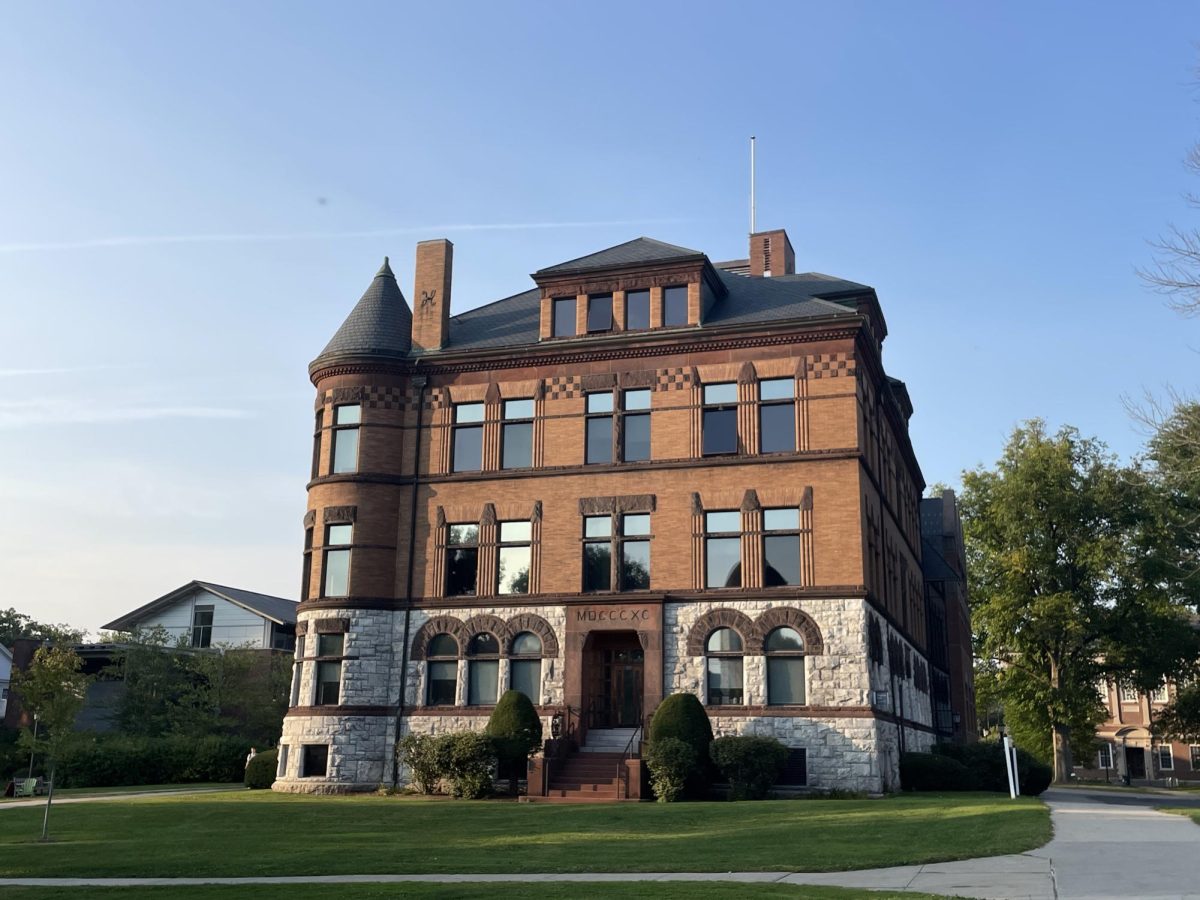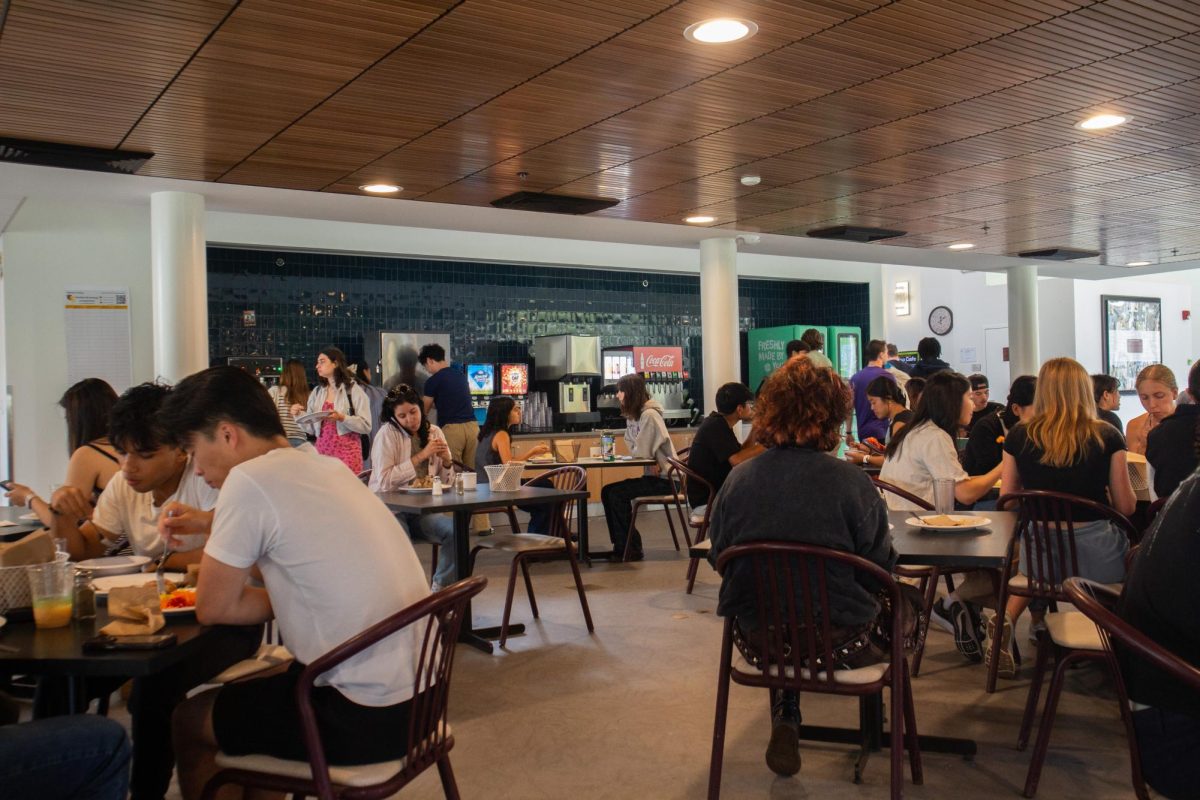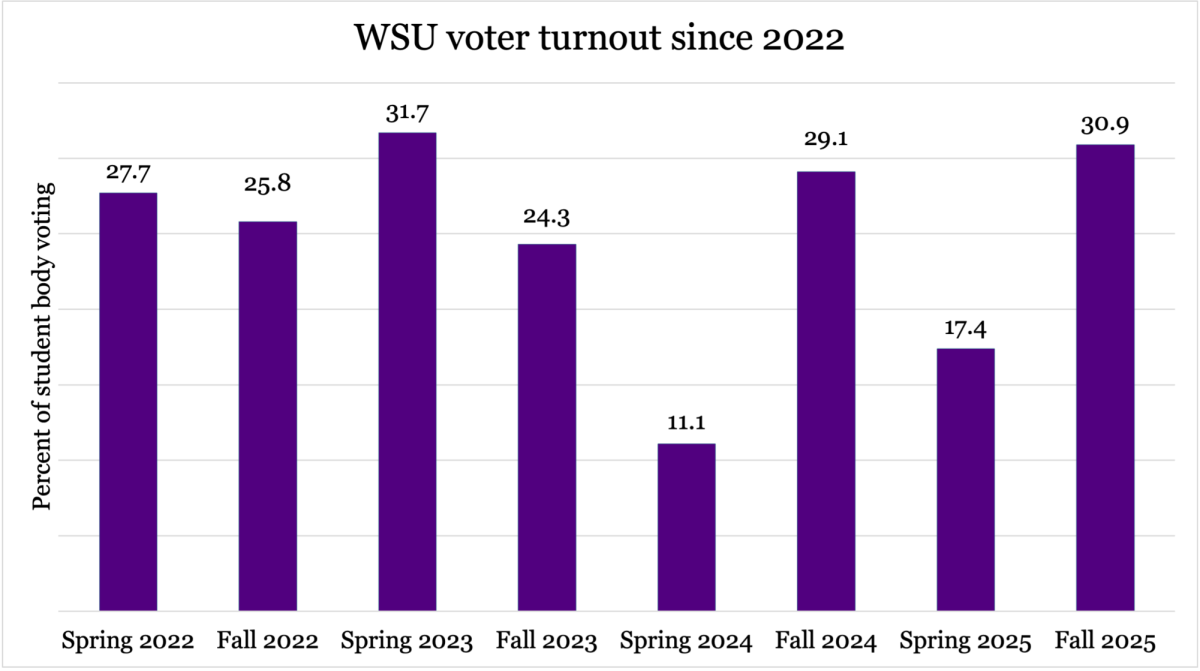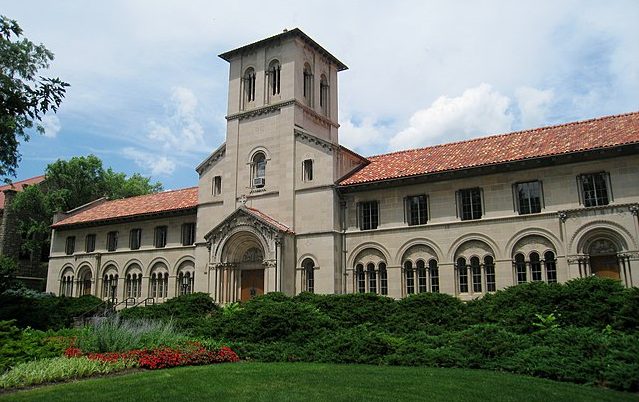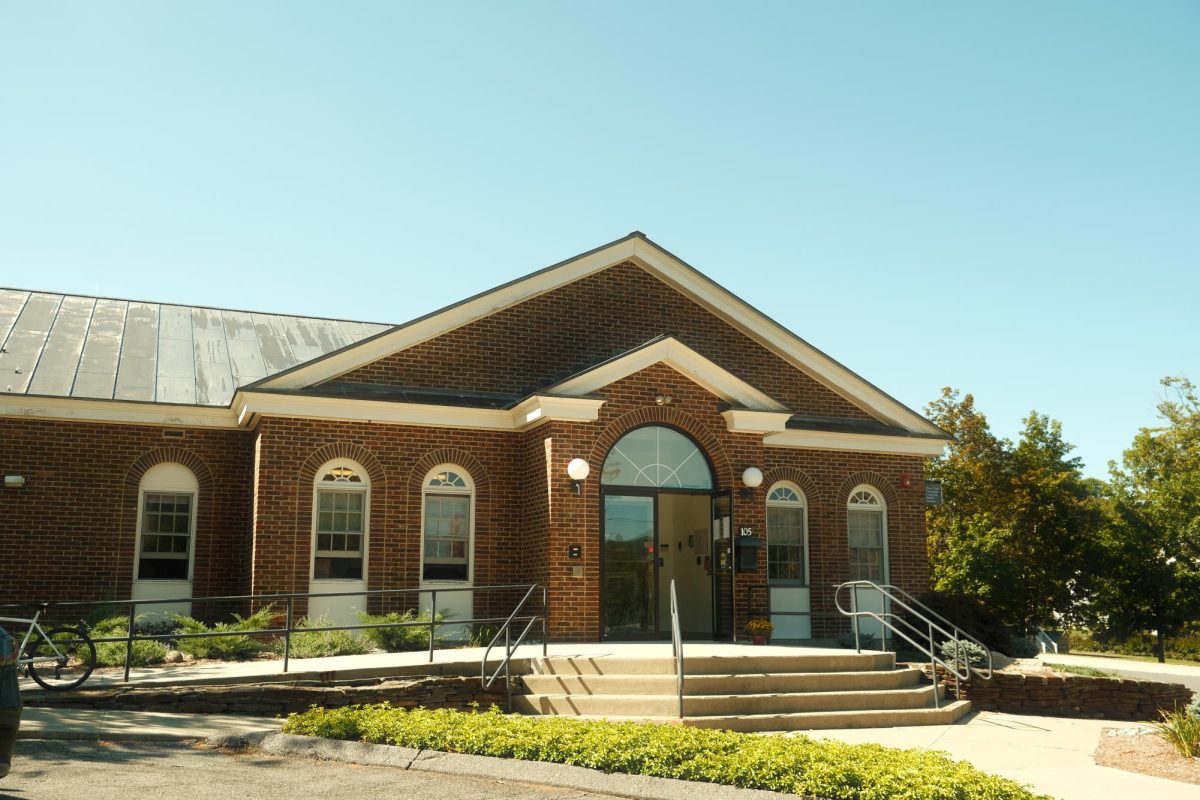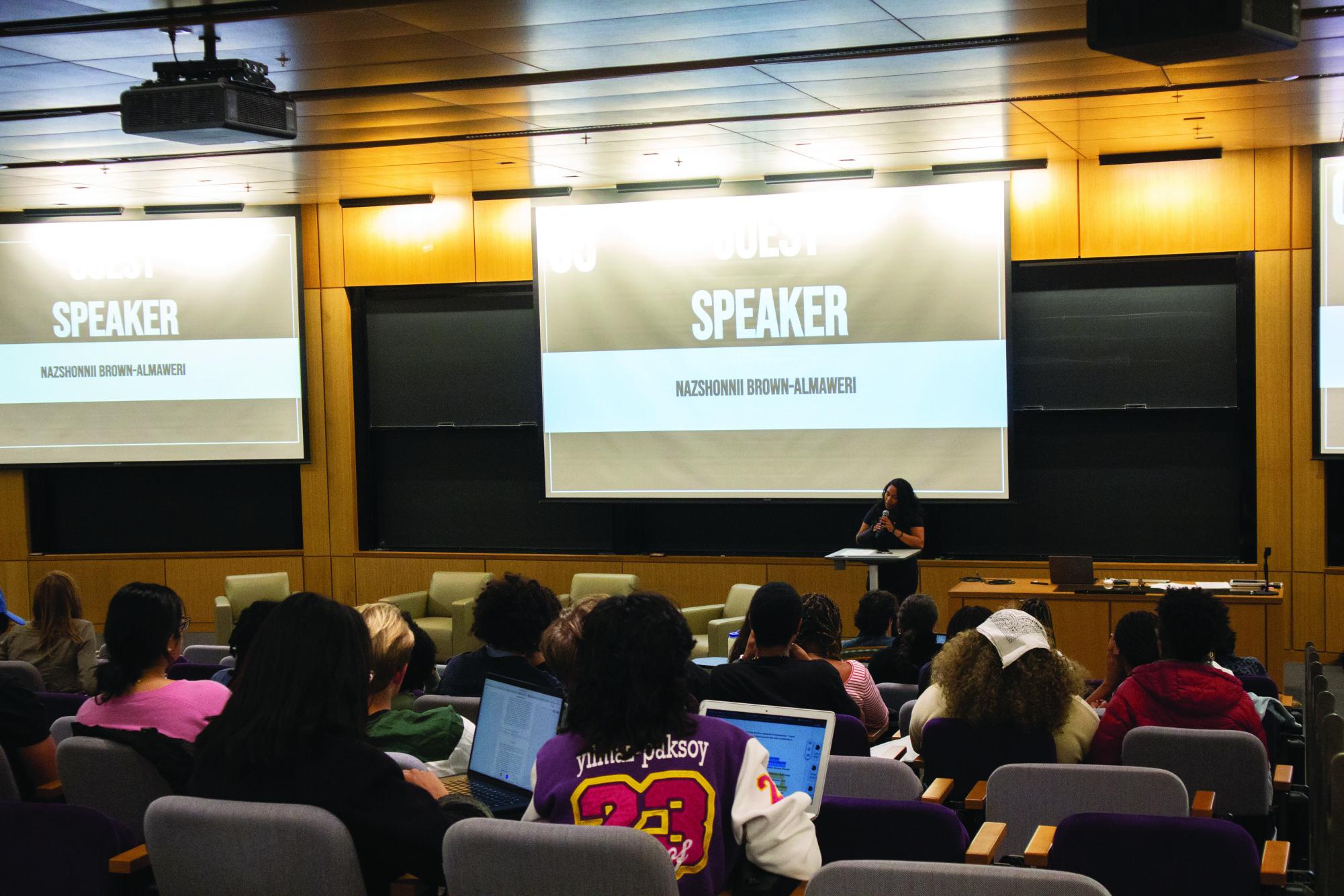
The Minority Coalition (MinCo) hosted its seventh annual teach-in on ethnic and Indigenous studies at the College on Friday in Bronfman auditorium. MinCo organized the event with Asian American Students in Action (AASiA), Black Student Union (BSU), Native American Indigenous Students Alliance (NISA), and Vista, the College’s Latina/o student organization.
The affinity groups presented on ongoing student activism as well as the history of ethnic and Indigenous studies at the College. The teach-in also included a panel featuring Associate Professor of Africana Studies Armond Towns, Assistant Professor of Latina/o Studies Kevin Cruz Amaya, and guest speaker Nazshonnii Brown-Almaweri, who is a farmer and educator.
Brown-Almaweri began the teach-in with a brief meditation. Isaac Rivera ’26, member of NISA, and Johnathan Martir ’26, member of VISTA, followed with a land acknowledgement.
Daisy Rosalez ’25.5, one of NISA’s founders, then spoke about the recent collaborations among students, faculty, the Town residents, and the Stockbridge Munsee-Mohican community. She outlined opportunities for students to undertake research, independent study projects, and volunteer work with the Tribal Historic Preservation Office. As an example of such student work, Rosalez referenced a 2022 list of policy recommendations created by a group of students at the College seeking to increase awareness of the Stockbridge Munsee-Mohican community’s history and presence in the Town.
Rosalez then addressed NISA’s advocacy for Indigenous students and the creation of an Indigenous studies department, for which they have created a petition and are working on its outreach and publicity.
Martir continued the presentation with a broad discussion of the history of ethnic studies in the United States, focusing on the 1969 Third World Liberation Front student strikes at the University of California, Berkeley, and San Francisco State University (SFSU). The movement called on the universities to include the history of marginalized communities in its curricula and eventually led to the creation of an ethnic studies department at UC Berkeley and a Black studies program at SFSU.
Next, Mimi Johnson ’26, political education coordinator of BSU, and Cheyenne Willis ’24.5, one of BSU’s co-chairs, presented on the history of BSU and the Africana studies department at the College.
Willis highlighted the efforts of the Williams Afro-American Society (WAAS), which was founded in 1967 by the only Black students enrolled at the time and was a precursor to BSU, formed in 1972. In 1968, WAAS proposed several changes at the College, including a scholarship named after Martin Luther King, Jr., the creation of an Afro-American studies department, and revised course syllabi that were more inclusive of Black history.
March 12, 1969, marked a pivotal moment for student activism at the College, Willis said. That day, students in WAAS expanded their proposal into a list of 15 demands split up into three categories: the implementation of an Afro-American studies program, improved administrative support for Black students, and an effort to recruit more Black applicants to the College.
In April 1969, students occupied Hopkins Hall until their demands were met, remaining in the building for four days. In response, the College created the Afro-American studies program — now Africana studies — and hired the College’s first tenured Black professor, Professor of Afro-American Studies Joseph E. Harris.
Willis also spoke about recent Black activism at the College. In 2022, Wood House became Black affinity housing under the name of Eban House. Eban is now institutionalized as Theme/Affinity/Program/Special Interest housing, which means that members will not need to reapply for it to retain its status as Black affinity housing for the next three years. In spring 2024, Rice House, an affinity space for Black students and BSU, opened as part of the newly renovated Davis Center. “Rice has been a key space for community building, solidarity, and organization for over 40 years,” Willis said.
She noted that after its recent restoration, Rice is now often used by non-Black students, limiting members of the BSU from engaging with its spaces. “We hope that speaking about this at the teach-in can serve as an initial step in formally recognizing and protecting Rice as a space for Black students,” Willis said.
Martir, Vista’s political events coordinator, and Ashley Ramirez ’26, Vista’s co-social events coordinator, then discussed the history of Vista and Latina/o studies at the College.
Martir first talked about the student occupation of Jenness House in 1988 to express disappointment about the College’s lack of administrative support for Latina/o students, which they said had led to low retention and graduation rates among these students. They provided three demands for the College: to hire two Hispanic-American visiting professors; ; to employ one Black and one Latinx tenure-track professor for any Division III department; and to require one course on the history and culture of Black, Latina/o, and Asian American communities, which is now the Difference, Power, and Equity requirement, Martir said.
Students engaged in hunger strikes in 1991 and 1993 to protest the College’s lack of response to their demands. “[The students] believed that something was inherently wrong at Williams in the ways that the administration lacked support for Latinx students on campus,” Martir said. “At the time, Latinx students felt overlooked and lied to by the administration.”
The College did not implement the demands until 2001, when it hired Chair of Latina/o Studies and Professor of History Carmen Whalen, the first tenure-track Latina/o studies professor. It created the Latina/o/ studies program in 2004.
Ramirez celebrated the recent hiring of Amaya in 2024 after students called for a Latina/o studies professor specializing in the arts.
Ramirez then recognized the College’s efforts to implement Africana and Latina/o studies and emphasized Vista’s demand for the creation of an Indigenous studies department. “We demand Williams start listening to us and to the faculty, to put in the work that comes along with being an institution of this caliber and distinction,” she said. “We can not wait two more decades for Williams to get with the program.”
Serah Park ’26, one of AASiA’s co-chairs, continued the student presentations with a historical overview of the Asian American studies movement at the College. She told the audience that the first proposal for Asian American studies was initiated by AASiA in the 1990s and officially submitted in 2004. The proposal was rejected by the Committee on Educational Policy (CEP), which stated that “the size of faculty can not be further expanded to any significant degree.”
In 2009, professors and staff found in the Faculty-Staff Initiative report that the College did not adequately support minority faculty, leading to poor retention of minority faculty, Park said. In 2012, an external review from professors at University of Massachusetts Amherst, Amherst College, University of Michigan, and the University of Washington urged the College to create an independent Asian American studies program. AASiA then submitted another proposal to the CEP, but it was again rejected.
As a result of a formal staffing request calling for an additional faculty member specializing in Asian American studies, the College hired Professor of American Studies Jan Padios in 2020.
In fall 2022, AAsiA students and faculty submitted a third proposal, which was finally approved by the College and resulted in the creation of the Asian American studies program. “Now in its second official year, there are still many challenges to sustaining a robust program, which include faculty retention and securing more staff,” Park said.
Rivera and Rosalez, both NISA representatives, provided a history of NISA and the Indigenous studies movement at the College. Rosalez spoke about Elizabeth Hoover ’01, who had formed the Native American Student Alliance at Williams in 1999 but later admitted to falsely identifying herself as Indigenous. Rosalez highlighted NISA’s creation in 2022 as the first Indigenous student group founded by students of Indigenous descent at the College. On Oct. 9, 2023, NISA and the Stockbridge-Munsee Tribal Historic Preservation Office hosted the first Indigenous Peoples’ Day event in Williamstown.
NISA currently comprises nine Indigenous students, Rosalez said. “I am extremely sad and concerned to say that this fall 2024, we did not welcome any new Native students,” she added. “We need Native students on this campus. That is what we need to address along with the creation of a Native American studies program.”
Rosalez then talked about some of NISA’s goals, which include the immediate appointment of a Native liaison for students at the College, the formation of a Native consulting committee including students and professors, funding for a minimum of two large campus-wide Native events a year, and improved recruitment of Native faculty and students.
Following the student presentations, guest speaker Brown-Almaweri, who is a member of the Navajo or Diné Nation, discussed her work with Native and BIPOC youth as a STEM educator and farmer. She discussed the importance of understanding the legacy of displacement when recognizing Indigenous ancestral knowledge and lived experiences. “All communities have diasporas, they have dialects, they have differences that need to be celebrated,” she said in her talk. “Within different ethnic groups, we have differences that we can acknowledge.”
Brown-Almaweri also highlighted the power of student and faculty voices, as shown by the presentations. “If you are faculty, administration, or someone that has the power to do something, even if you don’t think you do, listen to those calls to action,” she said. “Listen to those needs.”
The event culminated with the Brown-Almaweri, Towns, and Amaya’s panel. The speakers discussed their work and answered questions about their involvement with ethnic and Indigenous studies.
Ramirez later shared her reflections on the importance of the teach-in in an email to the [ITAL] Record. “I have always been a fan of remembering history and passing along information like this because Williams grudgingly became a more inclusive institution out of the work its students did, not because [it] wanted to be a better school,” she wrote. “So many of [the College’s] bragging points on [its] website came out of protests, violence, and student work.”
“I’m just disappointed that with all of the resources and status we pride ourselves on, it still boils down to the students willing to fight and take a stand instead of a proactive stance from the College,” she continued.






